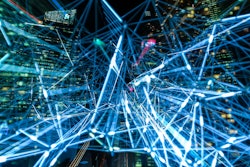
Supply chain executives need to have a substantive grasp of AI and machine learning. Understanding these innovative technologies will be vital not just because of these innovations impact current systems, but because they will be critical to how the future supply chain actually functions.
The Internet of Things has already impacted supply chains, with IoT sensors monitoring freight positions and conditions. With AI and machine learning, the data from these learnings are being used to predict future capacity constraints. If you couple that intelligence with rolling short-term demand predictions, you can then automatically respond to demand and supply changes on the most discrete levels.
The potential impact of these developments will make supply chains run faster and more efficient, which, in turn, allows companies to ship their products faster whether they are in a make-to-stock environment responding to supply and demand or operate as make-to-order. Inventory decreases, and supply chain flexibility increases at the same time from a company responsiveness standpoint.
AI and machine learning can further benefit supply chains through the elimination of delays and complexity tied to unexpected disruptions. With these supply chain exceptions, traditionally, people identify the exception, understand what the exception is, understand the options available to manage it, and then act on that exception. With AI and machine learning, that multifaceted and time-consuming process is removed because you have algorithms working in real time to handle the disruption. These innovations create an environment where as soon as a supply chain exception is identified it takes only a few seconds or less for the system to decide on the actions needed to be taken. The solutions are then immediately enacted to resolve that particular supply chain issue in real time.
The Future Is Autonomous
Beyond the ways that AI and machine learning can improve supply chains today lies the promise inherent in these technologies to impact in the future. Most notably is the potential of an autonomously running supply chain.
An autonomous supply chain is one that leverages AI, machine learning, and other technological advancements — robots and autonomous vehicles, for instance — to execute a supply chain that can operate virtually hands-free of people. That future autonomous supply chain would not need the people making the infinite, everyday decisions that currently occur at the tactical level. Additionally, adjustments would be created automatically, and people would only be needed to change, evaluate, and redirect the overall supply chain strategy.
An autonomous supply chain would also utilize both advanced predictive analytics in combination with closed-loop analytics, much like today. However, these processes would occur instantaneously through machine learning algorithms that can detect changes in the incoming data, change algorithms appropriately, and then implement those functions and updated algorithms.
It is quite apparent the impact that the autonomous supply chain will have on the efficiency of the system, which, in turn, will improve customer satisfaction and be a boon for businesses that are first and best at utilizing this potentially industry-changing innovation. While we are not at a point where the autonomous supply chain is a viable disruptor to the current environment, the technological shift is not too far away. This is the future, and it will be beneficial to all who rely on supply chains.
For now, embracing how AI and machine learning can improve systems is a significant first step. But are there potential negative repercussions when implementing these technologies?
Impact On The Current Supply Chain And Workers
The great fear, or ROI expectation, of adding AI and machine learning is that it will replace people’s jobs from a supply chain perspective. It is important to note that AI and machine learning are not and will not be a panacea for the entire supply chain. Today or in the future, it is an unlikely scenario that we will live in a world where supply chain executives and directors will decide on a strategy and then turn around and push a button to implement it, endlessly year in and year out.
The reality is that currently, AI is a supports workers current tasks and removes a significant amount of the repetitive, non-strategic day-to-day tasks. This allows supply chain professionals to focus on continuous improvements and preparing for future changes rather than on resolving everyday occurrences.
AI and machine learning will also allow issues such as the responsiveness versus efficiency trade-off and supply chain exceptions to be understood and adjusted daily so that the supply chain personnel will be focused more on strategic issues and less on the day-to-day tactical concerns.
Supply chain professionals will still be needed and used, but they will have very different roles and skills. The skills will be shifted towards data analysis and understanding, but basic supply chain skills will still be a fundamental part of the job. It also means that supply chain professionals will have a very different type of skill sets such as understanding advanced analytics and predictive modelling. This is comparable to hedging interest rates or commodities. It’s fairly difficult to create the models that enable this but checking the accuracy of the models is straight forward with an average understanding of calculus and statistics.
Implementation Challenges
Once the leap to adding these technologies is decided upon within a business, AI and machine learning implementations cannot be rushed. An analytics learning path for companies — from descriptive, diagnostic, real-time, predictive and prescriptive — should be carefully followed. It can be very tempting to circumvent a stage or many stages, but there are critical learning and cultural changes that occur at every step.
Even getting to the point of implementation in the current climate can be quite challenging. One of the most significant difficulties is the continuous changes to the business environment that directly and quite severely impacts the supply chain.
Take, for instance, the recent bout of tariffs between the US and China. Because of the climate, you already see a sizable shift of production out of China to other countries in Southeast Asia, so that manufacturers can avoid those tariffs.
However, this is also where the opportunity lies for a seamless transition to AI and machine learning. Fundamentally, as those supply chains are starting up, they're going to require a significant amount of human hand holding. The new systems will also benefit immensely from being formed with the current technological innovations inherent to the supply chain.
While the changes due to tariffs are occurring, they surely will not be the last of the changes. Embracing the idea that we can build in AI and machine learning as the supply chain evolves and changes over the next decade should be a boon for all stakeholders who rely on supply chain and will be the first step for a truly autonomous supply chain.


















